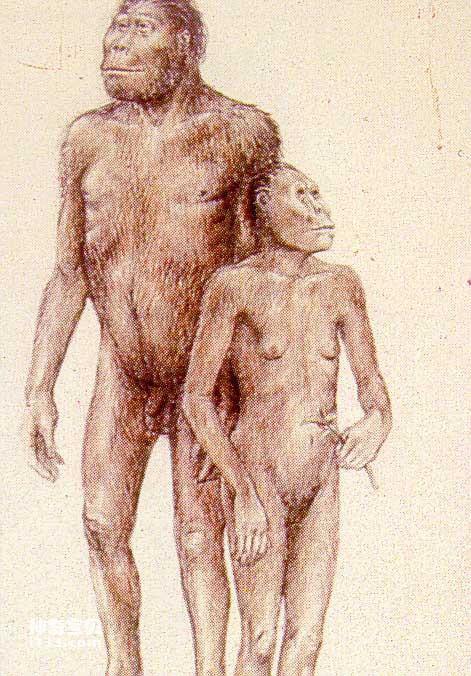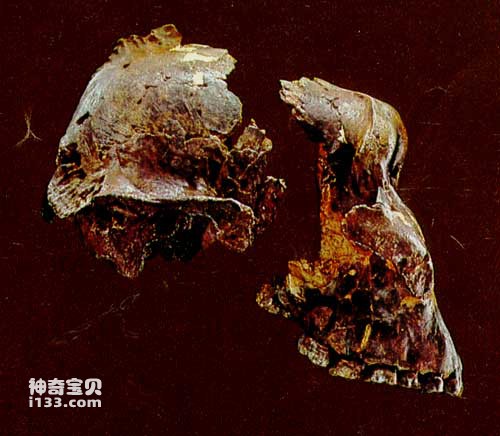While Dart and Bloom continued to discover Australopithecus in South Africa, the famous British paleoanthropologists Leakey and his wife (Louis Leakey and Mary Leakey) were also working hard in East Africa. On July 17, 1959, after nearly 30 years of unremitting search, they finally got their reward. Mary discovered an almost complete skull and a lower leg bone of an Australopithecus in the Olduvai Gorge in Tanzania. The skull is particularly thick, with "grindstone molars" similar to those of the South African Australopithecus stout species on the gums, but it is thicker than its South African "cousins". Louis named the specimen Homo pouidis in recognition of his support of the couple's work in Olduvai Gorge and other areas. The name "East African Homo" has now been abandoned, and the corresponding specimen is now called Australopithecus baumannii, and its age was determined to be 1.75 million years ago.

Sexual dimorphism in Australopithecus baculae
Starting in 1967, Howell, an anthropologist at the University of California, Berkeley, led an excavation team to investigate and excavate in the Omo Valley of Ethiopia. They discovered a large number of hominin fossils, including those about 3 million years ago that were similar to those of Australopithecus apes. The African species is similar, and the one that dates to about 2 million years ago is similar to the Australopithecus baumannii species.
Beginning in 1968, Richard Leakey, the son of the Leakeys, led a working group to carry out large-scale excavations in the area east of Lake Tekana in Kenya, and obtained many well-preserved and fairly complete skulls. Some of them are very similar to the Australopithecus bauensis species found in Olduvai, Tanzania. From the size of these bones, we know that the males of Australopithecus were much larger than the females: it is speculated that the height of the male can exceed 1.5 meters, while the female is barely 1.22 meters; the weight of the male is almost twice that of the female! This huge difference in male and female body size is called sexual dimorphism and can be seen today only in populations of baboons living in the savanna. Sexual dimorphism does not exist in monogamous (i.e., monogamous) species, but is always associated with polygyny (polygamy), an adaptation in which males compete with each other for females.

Australopithecus australopithecine
animal tags:
We created this article in conjunction with AI technology, then made sure it was fact-checked and edited by a Animals Top editor.